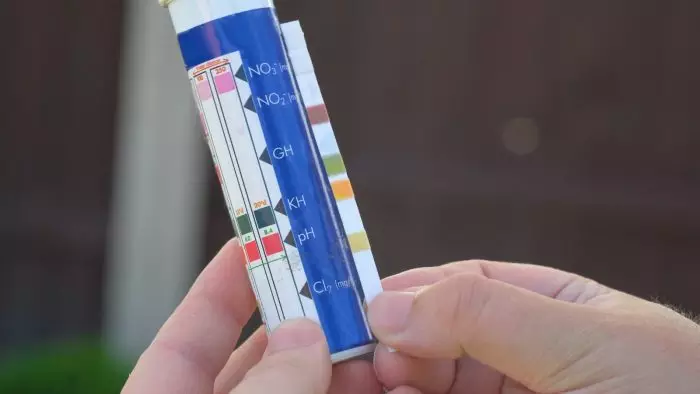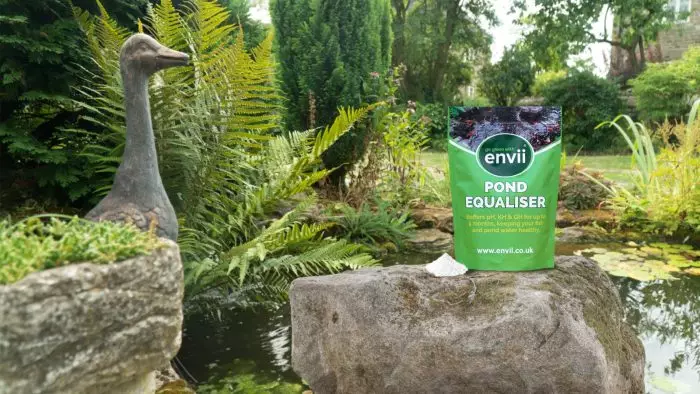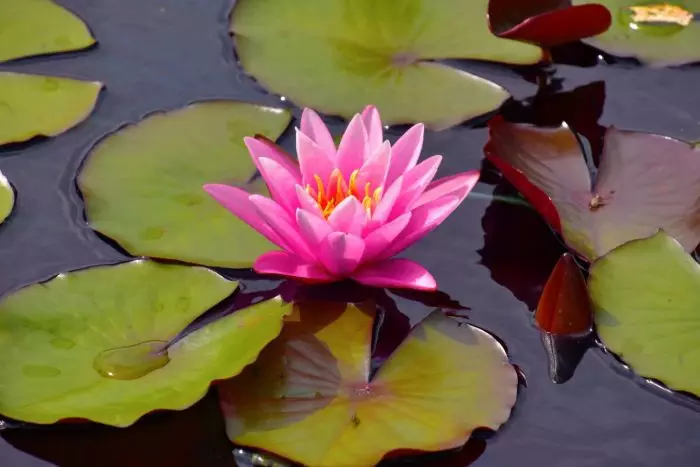Autumn is a perplexing time for gardening. The arduous work throughout spring and summer begins to fade away. While the hopeful wait for the next season of flower blooms and harvesting commences.
As a pond keeper, you’re no different in this respect. You toil all year to fight off algae and keep your pond in the best condition in the brighter weather. Only to be bombarded with algae come spring. Luckily, this is something you can avoid with a little maintenance over the coming months. You’ll be able to look forward to a pond fit for the first sign of a warm spring day!
Read on to discover autumn pond maintenance to keep your pond clear through winter.
Healthy water parameters
For any pond owner throughout the year, the main priority is to keep the pond water ‘healthy’. If the water parameters are correct in terms of pH and KH (carbonate hardness), you will provide a healthy environment for aquatic wildlife, fish and beneficial bacteria.
Without the water parameters being correct, beneficial probiotic bacteria struggle to deal with unwanted organics added during autumn & winter. Meaning there’s an elevated risk of fish & wildlife death and algae blooms in spring.

What happens if you don’t care for the pond over autumn?
Without any care or maintenance, an autumn pond will begin to form a layer of sludge on the bottom from unwanted organics. Such as leaves, twigs and faecal waste from fish and wildlife.
Whilst frogs and newts love to lay in this sludge, if left untreated, it can cause an imbalance in the water. This then makes it poisonous to wildlife and fish by discharging Hydrogen Sulphide (H2S) gas from anaerobic bacteria inside the sludge.

To prevent all of this, we recommend you carry out the following maintenance tasks during autumn:
Essential Autumn Pond Care Tasks
Check your water quality
After a spring and summer of algae, acidic rain and fish waste your pH and KH levels will need adjusting. The pH should be between 7 & 8.3 and the KH level should be above 5. Ultimately, You can either buy a quality testing kit. Take a sample of water to your local water garden centre.
Or simply, use Pond Equaliser to instantly stabilise the pH at 8, and KH above 5. Pond Equaliser will also remove any ammonia and heavy metals to create a safe and healthy environment for fish, wildlife and beneficial probiotic bacteria.

Add bacteria
Add good quality, probiotic bacteria. Unlike most other pond bacterial treatments, our products contain bacteria strain selected for their ability to work effectively at temperatures below 8°C. This makes them excellent to use all year round.
We recommend using Pond Klear for smaller ponds. Natural Pond Klear for larger natural ponds. Winter Pond Treatment for the colder winter months. The task-specific probiotic bacteria within these products work to slowly digest debris and unwanted organics and reduce the toxic H2S levels.

Tend to plants
Prune back any aquatic plants and remove any floating debris from the pond; this debris can be deposited in a compost heap as it is high in nitrogen and other essential nutrients for plant growth.
Don’t forget to check for any wildlife that may be hibernating when removing aquatic plants or sludge; newts and frogs will hibernate in sludge and dragonfly larvae can lie dormant in plants for several months.
When you remove any debris or plants from a pond, leave them at the side for a couple of hours to allow any wildlife to make its way back to the pond.

Cover up
Cover your pond with a net to catch leaves and twigs; leave gaps around the edge to allow wildlife to get in and out of the pond. The frogs and newts that may be hibernating at the bottom of the pond will be ready and waiting to eradicate slugs and snails in spring.

Put your fish on a diet
Feed fish less and less as the temperature drops, or consider moving to a low protein food. As temperatures drop, fish eat less, once it gets below a certain temperature they will stop feeding.
Therefore, if you continue feeding them, the wasted food will only break down, release nutrients into the water to feed any algae and will add to the layer of sludge at the bottom.

Deep clean
If you have a filter, clean it thoroughly in autumn to remove any algae or debris trapped during summer and clean monthly throughout autumn and winter. Especially if you want less of a cleaning task come spring.
Also, be sure to check out our tutorial on the left for how to clean pond filters.
Keep it moving, slowly
Keep pumps and filters running all year; they will continue removing debris and prevent the pond from freezing over. If possible, turn the flow rate down to avoid cooling the water further. If water freezes over, it restricts the available oxygen for fish, and seals in the toxic gases that can be released from decaying organics.
Finally, check your water quality, again…
Most important of all, get the water parameters right to increase the ponds biological self-cleaning ability, as this will reduce the amount of work required, and increase the enjoyment of your pond in spring & summer.
Pond keeping isn’t a case of good and bad luck. There are key things you should know if you want to achieve clear and healthy water. In addition, Discover the common reasons why ponds go green in spring for more information.
Still need help? Feel free to get in contact with our friendly customer service team here!

 Call us on 01246 240880
Call us on 01246 240880 Sign-up and receive 10% off
Sign-up and receive 10% off
I have a wildlife pond and privileged that newts.have made it their home. There are two solar pumps and two air stones that keep movement in the pond. I am using your products to clear green water and sludge, which have worked well, but I am wondering what else do I need to do to keep this pond healthy for the newts and snails.